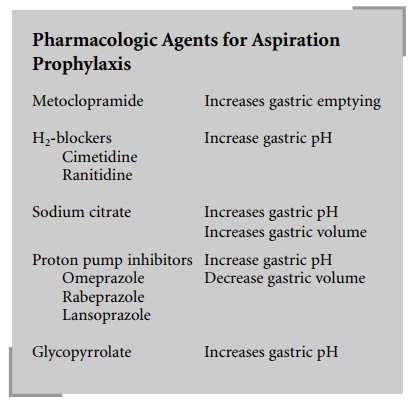Chapter: Clinical Cases in Anesthesia : Full Stomach
What is the reason for applying cricoid pressure during a rapid sequence induction, and what are some of the problems associated with it?
What is
the reason for applying cricoid pressure during a rapid sequence induction, and
what are some of the problems associated with it?
The cricoid cartilage is the only complete
cartilaginous circular ring in the trachea. As a result, posterior/rostral
pressure applied to it will occlude the upper esophagus against the cervical
vertebrae in an effort to prevent regurgitation of gastric contents into the
oropharynx. Interestingly, cricoid pressure has been shown to decrease LES tone
and may actually promote reflux. However, if gastro-esophageal reflux should
occur while cricoid pres-sure is being held, regurgitation into the pharynx
should
Cricoid pressure is poorly tolerated in the awake patient and can cause the patient to retch. This retching can increase intra-esophageal pressure and result in an esophageal rupture. In the starved supine patient the max-imum intragastric pressure is 25 mmHg. Increasing gastric volume by 750 ml can increase the intragastric pressure to 35 mmHg. Regurgitation is associated with 40 mmHg of intragastric pressure and can be prevented by 30 newtons of force on the cricoid. Older studies recommend 40 N of force. However, this much force is poorly tolerated, often distorts the laryngeal anatomy making intubation difficult, and may predispose the patient to an esophageal rupture. One solution is to provide 20 N of force to the awake patient. This relatively small amount of force will give some protection against regurgitation; however, if intra-esophageal pressure gets too high, regurgitation will occur but esophageal rupture will not. When the patient loses consciousness, the force on the cartilage should be increased to 30 N until the trachea is successfully intubated.

Related Topics